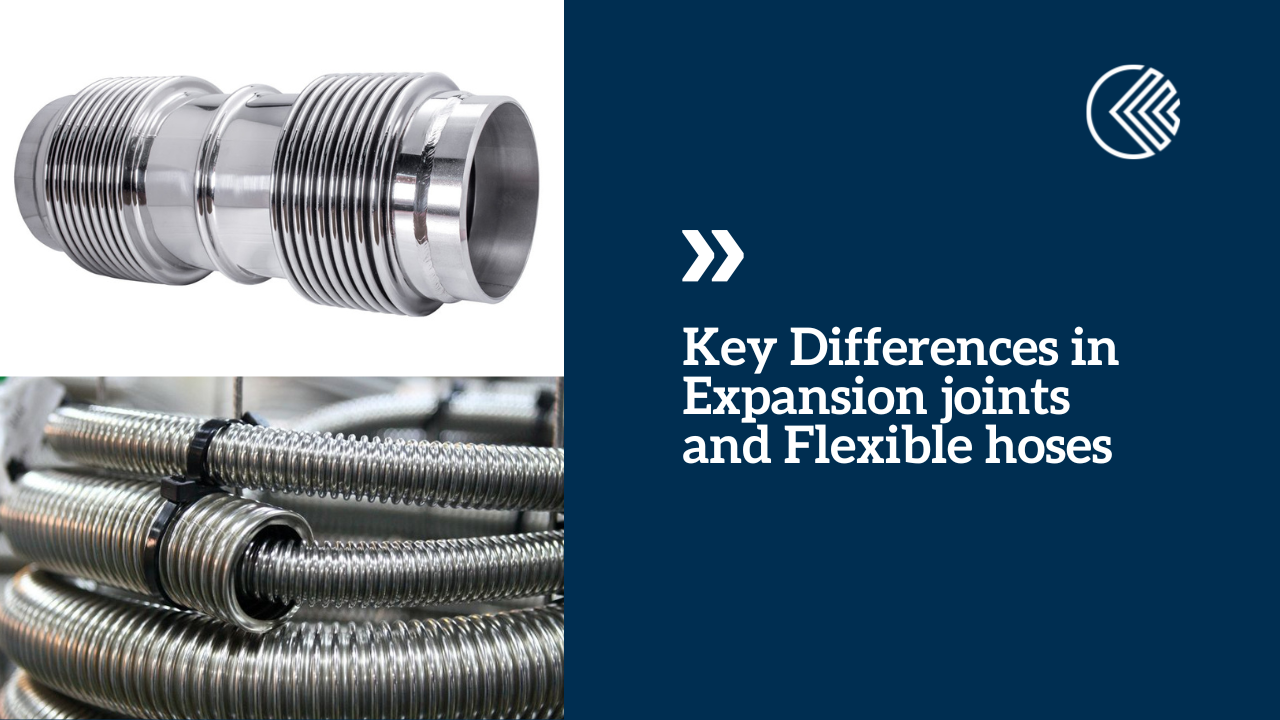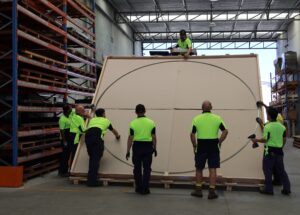
- KLINGER Australia
- Blogs
- Key Differences in Expansion joints and Flexible hoses

Expansion joints and flexible hoses—at first glance, they might look interchangeable. The truth is, these components are built for very different types of movement—and knowing the difference can make all the difference.
Purpose
Expansion Joints are primarily used to absorb thermal expansion, contraction, or mechanical movement in pipes and ducts. They are designed to accommodate axial, lateral, and angular movements due to temperature changes or structural shifts.
Flexible Hoses are more commonly used to provide flexibility, absorb vibrations, and connect different components in piping systems where flexibility and ease of movement are required. They are especially useful for connecting parts that are difficult to align or where movement is anticipated.
Design and Construction
Expansion Joints typically consist of a metal, fabric or rubber bellows that is reinforced with various materials, including steel, to withstand internal pressure and accommodate expansion or movement. They can have flanges or other fittings for easy installation and are usually a high degree more rigid than flexible hoses.
Flexible Hoses are usually made from materials like rubber, PVC, PTFE, Polypropylene, Convoluted stainless steel or braided metal, which allow them to flex and bend. They are often more flexible and can handle more dynamic movement and vibration compared to expansion joints.
Movement Absorption
Expansion Joints are designed to handle pipeline movements (axial, lateral, angular) and thermal expansion of pipes. They are used where movement is expected due to thermal effects or mechanical stresses.
Flexible Hoses are primarily designed to absorb smaller, more dynamic movements such as vibrations, slight misalignments, or slight shifts in the connected parts. They can absorb some movement, but their main function is more related to flexibility.
Applications
Expansion joints are commonly found in pipework systems where elevated temperatures are present such as in steam lines, exhaust systems, HVAC systems, and in industrial pipelines where pipes need to expand and contract.
Flexible Hoses are frequently used in systems where parts need to be connected with flexibility, like in fuel lines, water supply lines or in applications where the pipeline configuration changes or there is relative motion between components.
Pressure Handling
Expansion joints are generally used in low pressure applications but, in some circumstances, can be designed for high pressure. With higher pressures the movement scan, be restricted due to thicker material being required.
Flexible Hoses are suitable for both positive and negative pressures. The braided construction can allow for some very high-pressure applications while still keeping flexibility.
Durability
Expansion Joints can be made from highly durable materials and are designed to last in harsh environments, often with the capability to handle extreme temperature fluctuations and high-stress conditions.
Flexible Hoses’ flexibility means they are more susceptible to wear and tear, especially under repeated bending or exposure to abrasive conditions, though many are designed to be quite durable as well.
Maintenance
Expansion Joints often require less frequent maintenance because they are more rigid and static once installed. However, their cycle life — the number of times they can safely expand and contract — can be a limiting factor.
Flexible Hoses may need more regular inspection and replacement due to their flexible nature and susceptibility to cracking or wearing out from constant flexing or harsh environmental conditions.
In Summary
- Expansion joints are primarily for managing pipe movements in many directions, primarily caused by thermal expansion. With correct design and engineering these items can expect to last a long time.
- Flexible hoses provide more general flexibility, ideal for absorbing vibration and connecting misaligned components. Can be used in a range of pressure and temperature applications.
Share this article on social
Need help with a product?
Get in touch
Call 1300 798 279 (from Australia)
+61 8 9251 1688 (outside Australia)
OR send us your enquiry


